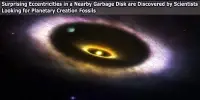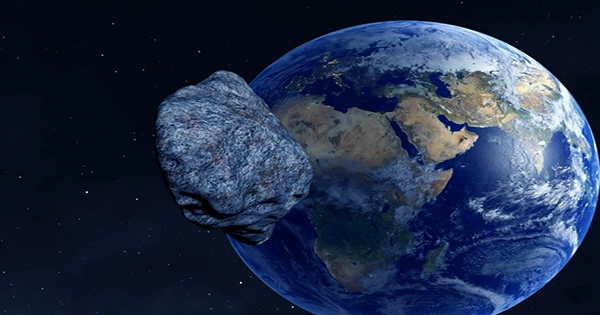Astronomers have long searched the vast universe for evidence of extraterrestrial civilizations. But liquid water is a must for life to exist on a planet. Because it has been assumed that planets like Earth receive their water by accident if a massive, frozen asteroid impacts the planet, the likelihood of that discovery scenario has appeared to be impossible to assess.
Currently, a startling study by experts at the University of Copenhagen’s GLOBE Institute suggests that water may have existed even during the planet’s birth. The calculations of the paper show that this holds for Earth, Venus, and Mars.
“All our data suggest that water was part of Earth’s building blocks, right from the beginning. And because the water molecule is frequently occurring, there is a reasonable probability that it applies to all planets in the Milky Way. The decisive point for whether liquid water is present is the distance of the planet from its star,” says Professor Anders Johansen from the Centre for Star and Planet Formation who has led the study that is published in the journal Science Advances.
Anders Johansen and his team have estimated the rate of planet formation and the constituent elements of planets using a computer model. According to the study, 4.5 billion years ago, the accretion of what would eventually become Earth was caused by millimeter-sized dust particles of ice and carbon that are known to orbit around all newborn stars in the Milky Way.
“Up to the point where Earth had grown to one percent of its current mass, our planet grew by capturing masses of pebbles filled with ice and carbon. Earth then grew faster and faster until, after five million years, it became as large as we know it today. Along the way, the temperature on the surface rose sharply, causing the ice in the pebbles to evaporate on the way down to the surface so that, today, only 0.1 percent of the planet is made up of water, even though 70 percent of Earth’s surface is covered by water,” says Anders Johansen, who together with his research team in Lund ten years ago put forward the theory that the new study now confirms.
All our data suggest that water was part of Earth’s building blocks, right from the beginning. And because the water molecule is frequently occurring, there is a reasonable probability that it applies to all planets in the Milky Way. The decisive point for whether liquid water is present is the distance of the planet from its star.
Professor Anders Johansen
According to the “pebble accretion” idea, planets are created as a result of pebbles clumping together, and they subsequently get bigger and bigger.
Because the water molecule H2O is present throughout our galaxy, according to Anders Johansen, the idea raises the possibility that other planets may have developed similarly to Earth, Mars, and Venus.
“All planets in the Milky Way may be formed by the same building blocks, meaning that planets with the same amount of water and carbon as Earth and thus potential places where life may be present occur frequently around other stars in our galaxy, provided the temperature is right,” he says.
There is a strong probability that other planets in our galaxy may have roughly the same quantity of water and continents as Earth if they shared the same building components and climate as Earth.
Professor Martin Bizzarro, co-author of the study, says: “With our model, all planets get the same amount of water, and this suggests that other planets may have not just the same amount of water and oceans, but also the same amount of continents as here on Earth. It provides good opportunities for the emergence of life.”
On the other hand, if the amount of water on planets varied at random, the planets might have a very different appearance. While some planets would be totally covered with water, others would be too dry for life to flourish.
“A planet covered by water would of course be good for maritime beings, but would offer less than ideal conditions for the formation of civilisations that can observe the universe,” says Anders Johansen.
The upcoming generation of satellite telescopes will provide far greater prospects for Anders Johansen and his research team to observe exoplanets circling stars other than the Sun.
“The new telescopes are powerful. They use spectroscopy, which means that by observing which type of light is being blocked from the planets’ orbit around their star, you can see how much water vapour there is. It can tell us something about the number of oceans on that planet,” he says.
















